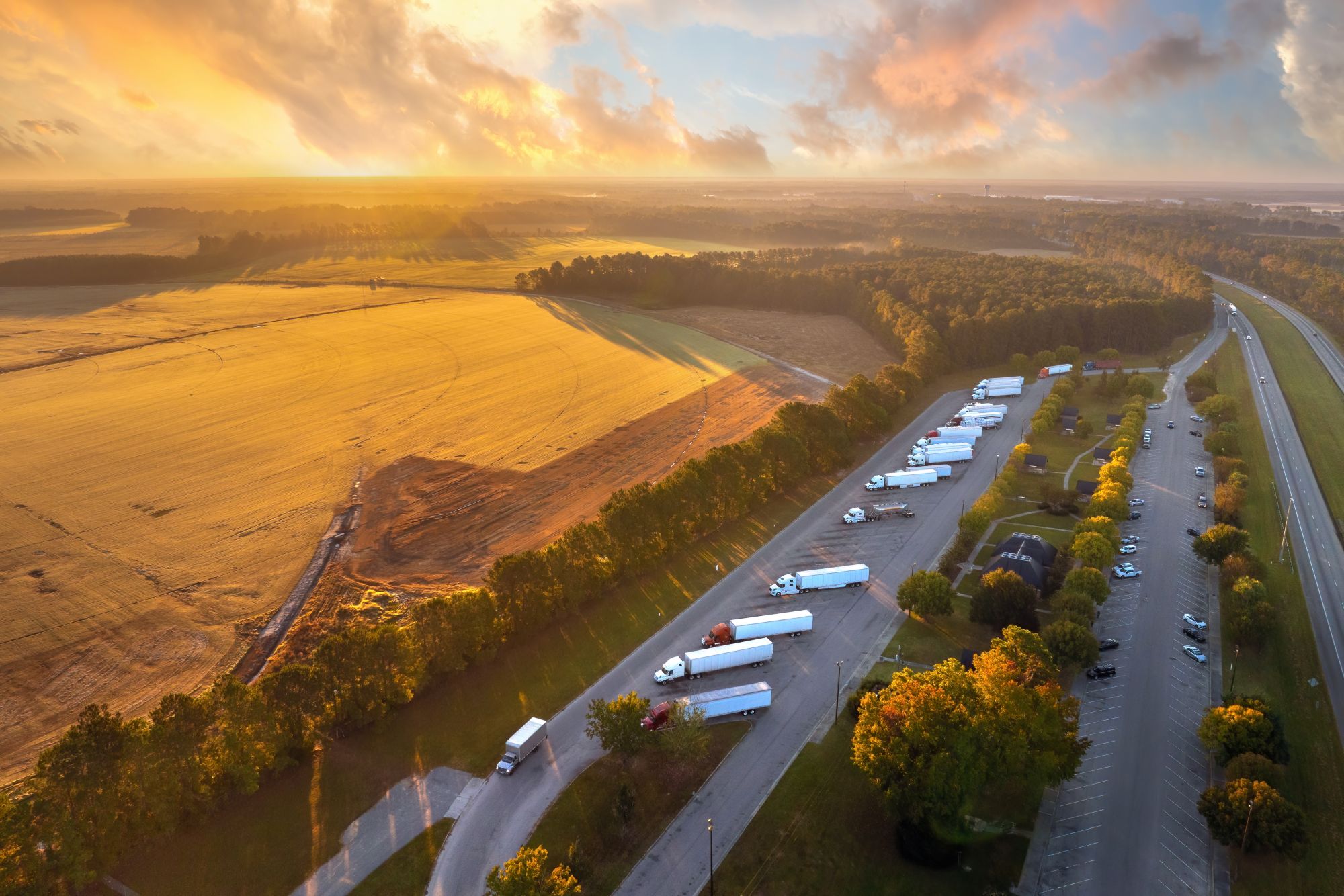
Miranda Blake
Sikker kørepraksis: Vigtige retningslinjer for langturschauffører
Oprettet: 15.01.2025
•
Opdateret: 15.01.2025
Som lastbilchauffør er det afgørende, at du altid er sikker bag rattet. Men - med ekstremt vejr og lange ruter over hele Europa - hvordan kan du sikre, at du gør en positiv forskel?
I denne artikel skitserer vi vigtige retningslinjer, så du kan prioritere din egen og andres sikkerhed.
Planlægning og forberedelse
For det første skal du sørge for at have alt på plads, før du tager af sted.
Rejsearrangement
Planlæg din rute omhyggeligt på forhånd, og tag højde for faktorer som vejrforhold, vejarbejde og potentielle farer. Det er en god idé at bruge teknologi som GPS og vejr-apps til at holde sig orienteret om din rejse. Du bør også planlægge stop for at hvile, tanke op og spise. På den måde sikrer du, at du holder en ensartet tidsplan uden at gå på kompromis med sikkerheden.
Inspektioner af køretøjer
Før du kører ud på vejen, skal du foretage en grundig inspektion af din lastbil. Tjek følgende:
● Dæk skal være korrekt pumpet og slidt
● Bremser for optimal ydeevne
Lys og signaler for funktionalitet
● Væskeniveauer (olie, kølervæske, bremsevæske osv.)
● Spejle til korrekt justering
● Fastgørelse af last
Ved at vurdere disse ting regelmæssigt kan du identificere potentielle problemer, før de eskalerer til store problemer.
Sikker kørepraksis på vejen
Det er lige så vigtigt at implementere dem, når du har startet motoren.
Håndtering af træthed
Dette er en betydelig risikofaktor for langturschauffører som dig selv. For at bekæmpe dette anbefaler vi:
● Overholdelse af reglerne omkring [chaufførernes arbejdstid] (https://www.gov.uk/drivers-hours/eu-rules)
● Hold regelmæssige pauser - også selvom du ikke føler dig træt
● Genkende tegn på træthed og trække ind til siden for at hvile, når det er nødvendigt
● Opretholdelse af en konsekvent søvnplan, når det er muligt
Defensiv kørsel
Det er også klogt at indtage en defensiv kørestil for at forudse og undgå potentielle farer. Et par ideer er:
● Sikre en sikker følgeafstand
● Vær opmærksom på dine blinde vinkler
● Undgå hyppige vognbaneskift og giv tegn i god tid
● Juster din hastighed efter vej- og vejrforhold
● At være forberedt på andre bilisters handlinger
Hastighedsstyring
Med hensyn til punktet om at holde en sikker og ensartet hastighed, så bør du gøre det:
● Overhold altid restriktionerne, især i områder med reducerede hastighedsgrænser for lastbiler.
● Sænk hastigheden i kurver, i arbejdszoner og under dårlige vejrforhold.
● Brug hjælpebremser på stejle nedkørsler for at forhindre overophedning.
Vedligeholdelse af køretøjer og sikkerhed
En anden vigtig ting for sikker langdistancekørsel er, at du sørger for at vedligeholde og beskytte din lastbil.
Regelmæssig vedligeholdelse
Du skal følge en streng tidsplan for at holde dit køretøj i optimal stand. For eksempel gennem:
● Udfør hyppige olieskift og væsketjek
● Eftersyn og vedligeholdelse af bremsesystemet
● Overvågning af dæktryk og tilstand
● Holde det elektriske system i god stand
● At løse eventuelle problemer med det samme for at forhindre nedbrud på vejen
Lastsikkerhed
På samme måde er det vigtigt at sørge for, at din last er sikker. Det kan du gøre ved at:
● Brug af passende forankrings- og sikringsanordninger
● Fordel belastningen jævnt
● Kontroller lastsikringen igen under stop, især efter pludselige opbremsninger eller skarpe sving.
Truck security
Med [protecting your vehicle] (https://snapacc.com/newsroom/tips-for-keeping-your-vehicle-secure-protecting-your-truck-from-theft/) oven på din last anbefales det, at du..:
● Parker i veloplyste områder med høj sikkerhed, når du stopper for at hvile.
● Brug tyverisikring og låsemekanismer.
● Vær opmærksom og rapporter enhver mistænkelig aktivitet.
Opmærksomhed på vejr- og vejforhold
Som langturschauffør skal du også forberede dig på forskellige forhold i forbindelse med klimaet og vejene. Overvej det for eksempel:
● Hold dig orienteret om vejrudsigter langs din rute
● Juster din kørsel eller udsæt din rejse i de mere ekstreme elementer
● Medbringe nødvendigt udstyr (kæder, nødkit osv.) til forskelligt vejr.
● Vær ekstra forsigtig i ukendte områder eller områder med særlige farer
Sundhed og velvære
At bevare [et godt helbred] (https://snapacc.com/newsroom/how-to-be-a-healthy-truck-driver/) er lige så vigtigt i din søgen efter sikker kørsel. Så sørg for det:
● Få regelmæssige helbredsundersøgelser og alle nødvendige lægeerklæringer.
● Spis en afbalanceret kost, og hold dig hydreret.
● Dyrk motion, når det er muligt - også selvom det bare er udstrækning i pauserne.
● Håndter stress ved hjælp af afslapningsteknikker eller hobbyer i fritiden.
Sikker kørsel med SNAP
En anden måde at øge sikkerheden på er via vores [intruck app] (https://intruckapp.com/download/). Den giver lastbilchauffører som dig mulighed for at betale for forskellige tjenester som parkering, vask, brændstof og meget mere. Ved at eliminere kontanttransaktioner begrænser det eventuelle distraktioner.
Desuden har mange pladser forbedrede sikkerhedsforanstaltninger, så du kan føle dig sikker på, at dit køretøj er i sikkerhed, mens du holder de nødvendige pauser. Og da vores app giver brugerne mulighed for at reservere parkeringspladser i forvejen, kan du være sikker på, at der er et sikkert sted at hvile sig efter lange timer på vejen.
Husk: Sikker kørepraksis er ikke bare retningslinjer; det er vigtige principper, som alle langturschauffører bør tage til sig som en del af deres professionelle etos. Ved at prioritere sikkerhed gennem omhyggelig planlægning, årvågen kørsel, korrekt vedligeholdelse og brug af teknologi som intruck kan du reducere de risici, der er forbundet med dit krævende erhverv, betydeligt.
Hvis du vil vide mere, kan du kontakte vores team på +44 (0)1603 777242.



